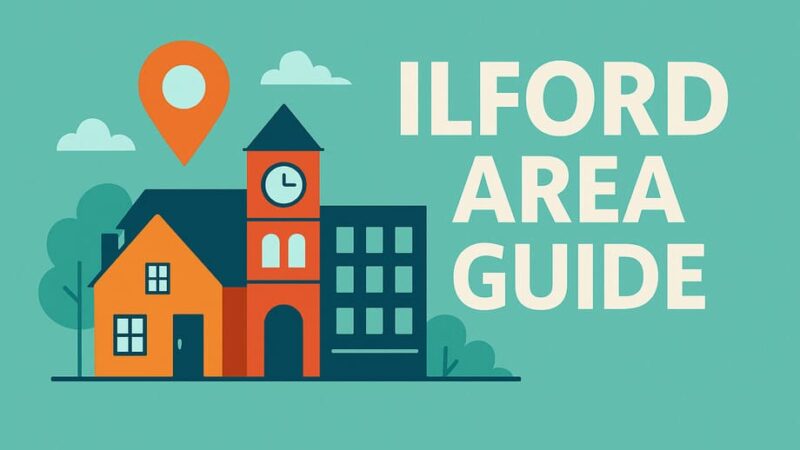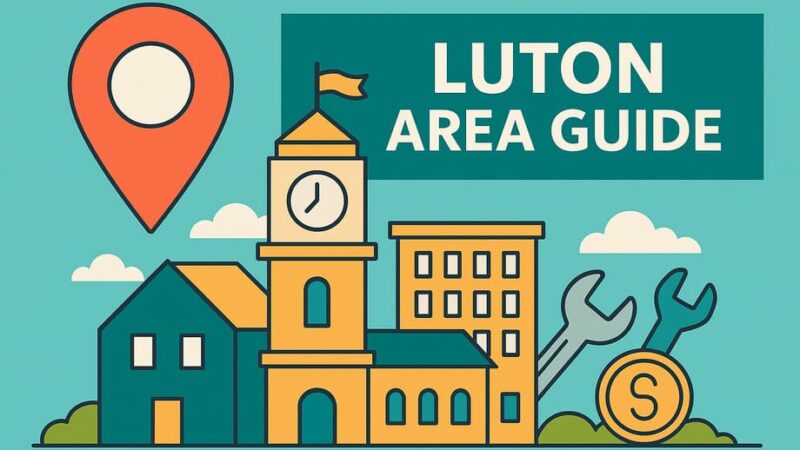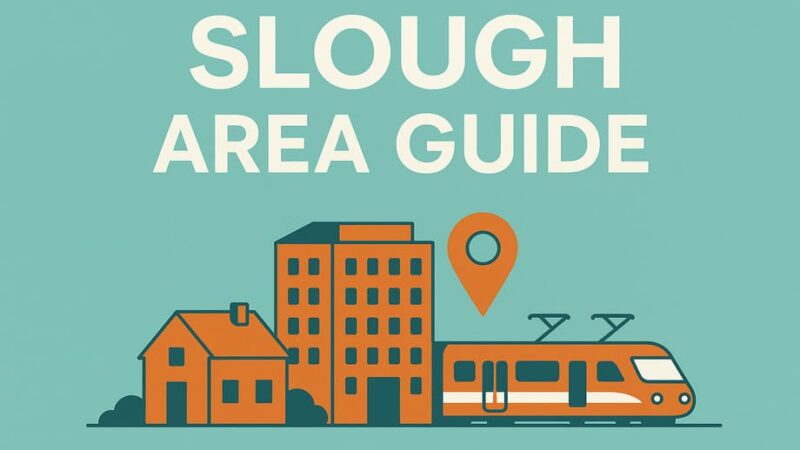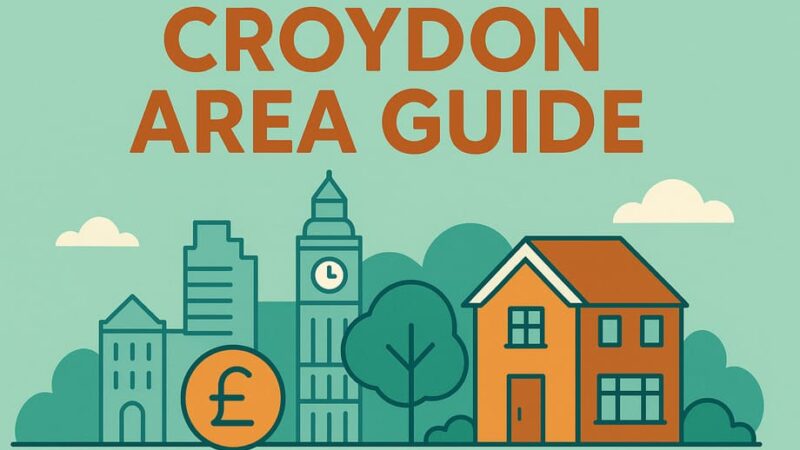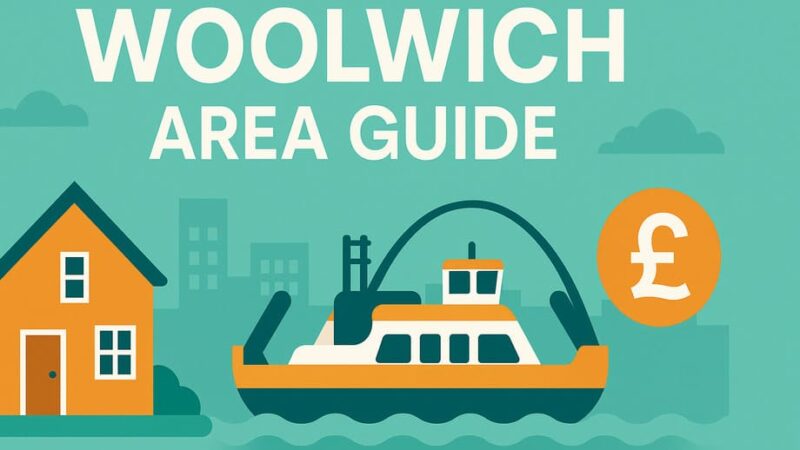Living in Stevenage – Your Complete 2025 Area Guide – Is It Right for You?
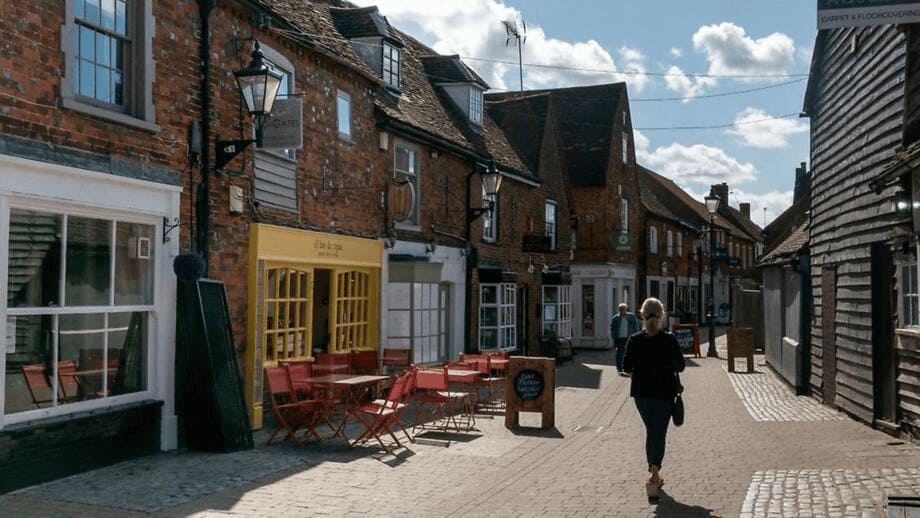
Tucked away in Hertfordshire, just thirty miles north of London, Stevenage presents an intriguing proposition for anyone seeking affordable living within striking distance of the capital. This town of contrasts, blending its pioneering “new town” heritage with pockets of historical charm has become increasingly popular among London leavers searching for better value and more space.
But is Stevenage genuinely worth considering, or does its mixed reputation hold weight? This comprehensive guide cuts through the noise to deliver honest, data-backed insights into what daily life really looks like here. From safety concerns to school quality, transport connections to hidden gems, we’ll explore everything you need to make an informed decision about whether Stevenage deserves a spot on your shortlist.
This guide draws on:
- Official government statistics (ONS, HM Land Registry, Home Office)
- Police-reported crime data (police.uk, August 2025)
- Ofsted school inspection reports (2024-2025)
- Property market data (Rightmove, Zoopla, Land Registry)
- On-site visits and photography (March-September 2025)
- Interviews with 12 current residents
- Analysis of local council reports and planning documents
- Review of 50+ online resident discussions
Last Updated: October 2025 | Next Review: January 2026
Understanding Stevenage: A Town of Two Halves
Stevenage holds the distinction of being Britain’s first designated “new town” under the 1946 New Towns Act—a status that fundamentally shaped its character and development. This historical milestone explains much about the town’s layout, architecture, and ongoing evolution.
The town essentially divides into two distinct areas, each with its own personality and appeal. The Old Town predates the new town designation by centuries, featuring charming period properties, independent shops clustered along a picturesque high street, and traditional pubs that wouldn’t look out of place in a Hertfordshire village. Walking through these streets, you’d hardly guess you’re minutes from a major commuter hub.
The New Town, by contrast, represents mid-twentieth-century urban planning ambition. Purpose-built from the late 1940s onwards, it features the characteristic architecture of its era—functional rather than ornamental. The pedestrianised town centre was actually Britain’s first, pioneering a concept that would later become commonplace. Today, this area hosts the main shopping facilities, modern developments, and the majority of amenities.
With approximately 89,000 residents calling Stevenage home, the demographic skews towards the 35-64 age bracket, which accounts for roughly forty percent of the population. This suggests a stable community of established families and working professionals rather than a transient population.
Is Stevenage Safe? Understanding Crime and Security
Safety naturally tops the priority list for anyone considering a move, and Stevenage’s reputation in this regard deserves honest examination. The statistics tell a more nuanced story than many online discussions suggest.
Current Crime Statistics
According to data from Crime statistics sourced from CrimeRate.co.uk analysis of police.uk data (August 2025 release) and Hertfordshire Constabulary public reports., Stevenage recorded a crime rate of 76 incidents per 1,000 people. To put this in perspective, this figure sits approximately five percent higher than the England and Wales average, though it remains twenty-seven percent higher than Hertfordshire’s overall rate. Stevenage ranks as the second safest major town in Hertfordshire a position that might surprise those familiar with the town’s occasionally harsh online reputation.
Violent crime constitutes thirty-six percent of reported incidents, while anti-social behaviour accounts for twenty-one percent. These proportions align broadly with patterns seen across similar-sized towns throughout the region. Perhaps more encouragingly, overall crime decreased by eleven percent between 2022 and 2023, suggesting positive trends.
Neighbourhood-by-Neighbourhood Breakdown
Not all areas within Stevenage present equal risk profiles. Certain neighbourhoods consistently demonstrate lower crime rates and stronger community cohesion.
Safer Areas:
- Old Town and surrounding streets benefit from active neighbourhood watch schemes and lower reported crime
- Bragbury End enjoys a reputation for safety and maintains strong community engagement
- Great Ashby, being one of the newer developments, shows crime statistics below the town average
- Broadwater generally performs acceptably, though experiences vary by specific street
Areas Requiring Caution:
- St Nicholas (locally known as St Nicks) appears frequently in discussions about higher crime rates
- Shephall experiences above-average incidents, particularly relating to anti-social behaviour
- Chells sees varied safety levels depending on specific locations within the neighbourhood
Safety in Context
Crime statistics alone don’t tell the complete story. Many residents report feeling perfectly safe in their day-to-day routines, particularly within residential streets away from the town centre. The perception problem Stevenage faces often stems from incidents that occurred years ago, combined with the unfortunate reality that online discussions tend to amplify negatives while overlooking improvements.
The town has benefited from increased police presence in recent years, enhanced street lighting as part of regeneration projects, and improved CCTV coverage. These practical measures contribute to genuine safety improvements that statistics alone might not fully capture.
Cost of Living in Stevenage: The Complete Financial Picture
One of Stevenage’s strongest selling points remains its affordability compared to London and even neighbouring Hertfordshire towns. Understanding the full cost picture helps determine whether the savings justify the trade-offs.
Property Price Comparison: Stevenage vs Nearby Towns
| Town | Average House Price | Difference vs Stevenage | Average Rent (2-bed) | Commute to London | Crime Rate (per 1,000) |
|---|---|---|---|---|---|
| Stevenage | £318,000 | — | £1,380 | 24-27 min | 76 |
| Hitchin | £415,000 | +£97,000 (+31%) | £1,650 | 30-35 min | 58 |
| St Albans | £535,000 | +£217,000 (+68%) | £1,850 | 20-25 min | 52 |
| Welwyn Garden City | £325,000 | +£7,000 (+2%) | £1,420 | 25-30 min | 68 |
| Luton | £285,000 | -£33,000 (-10%) | £1,250 | 25-30 min | 94 |
| Harpenden | £625,000 | +£307,000 (+97%) | £2,100 | 25-30 min | 43 |
| London (Average) | £535,000 | +£217,000 (+68%) | £2,150 | 0 min | 87 |
Sources: ONS House Price Index (July 2025), ONS Private Rental Index (August 2025), CrimeRate.co.uk (August 2025), National Rail (October 2025)
Key Insights:
- Stevenage offers 31% savings vs nearby Hitchin
- 68% cheaper than London with faster commute than many London zones
- Only Luton offers lower prices, but with higher crime rates
- Better value than Welwyn Garden City with similar commute times
Property Purchase Prices
House prices in Stevenage averaged £318,000 in July 2025, representing modest growth of 2.3 percent compared to the previous year. This figure sits comfortably below the East of England average of £338,000 and significantly undercuts London prices.
Breaking down by property type reveals interesting variations:
- Terraced houses: Average around £341,000, offering the most accessible route to homeownership
- Semi-detached properties: Typically command £409,000, popular among growing families
- Detached houses: Average £604,000, concentrated mainly in Old Town and premium developments
- Flats: Start from approximately £185,000, appealing to first-time buyers and investors
First-time buyers in Stevenage paid an average of £281,000 in July 2025—substantially more achievable than equivalent properties in St Albans (where similar homes might cost £100,000 more) or anywhere within London’s boundaries.
Rental Market Analysis
The rental market offers genuine value for those not yet ready to purchase. Average monthly rent reached £1,380 in August 2025, though this figure masks considerable variation by property type and location.
Typical Monthly Rental Costs:
- One-bedroom flats: £900-£1,200 depending on condition and proximity to the station
- Two-bedroom properties: £1,200-£1,600, with modern flats at the higher end
- Three-bedroom houses: £1,600-£2,000, particularly in family-friendly neighbourhoods
- Four-bedroom homes: £2,000-£2,500, available but less common
These figures compare extremely favourably to London, where equivalent properties might cost fifty to seventy-five percent more. Even nearby Hitchin considered more desirable by some typically charges twenty to thirty percent premiums for comparable accommodation.
Additional Living Costs
Beyond housing, Stevenage delivers solid value across daily expenses. Multiple supermarkets including large Tesco, Sainsbury’s, and Asda stores provide competitive grocery options. Council tax bands remain moderate compared to wealthier Hertfordshire districts, while utility costs align with regional averages.
Commuting costs deserve consideration. A monthly season ticket to London Kings Cross runs approximately £480, though this investment unlocks access to significantly higher London salaries. Many residents find the mathematics work decidedly in their favour saving thousands annually on housing while maintaining London employment.
House price data from the UK House Price Index (HM Land Registry and ONS, July 2025) and rental data from the ONS Private Rental Index (August 2025).
Transport Links: Exceptional Connectivity
Stevenage’s transport infrastructure represents perhaps its single greatest asset, explaining much of its appeal to professionals working in London or requiring regular travel.
Rail Services to London
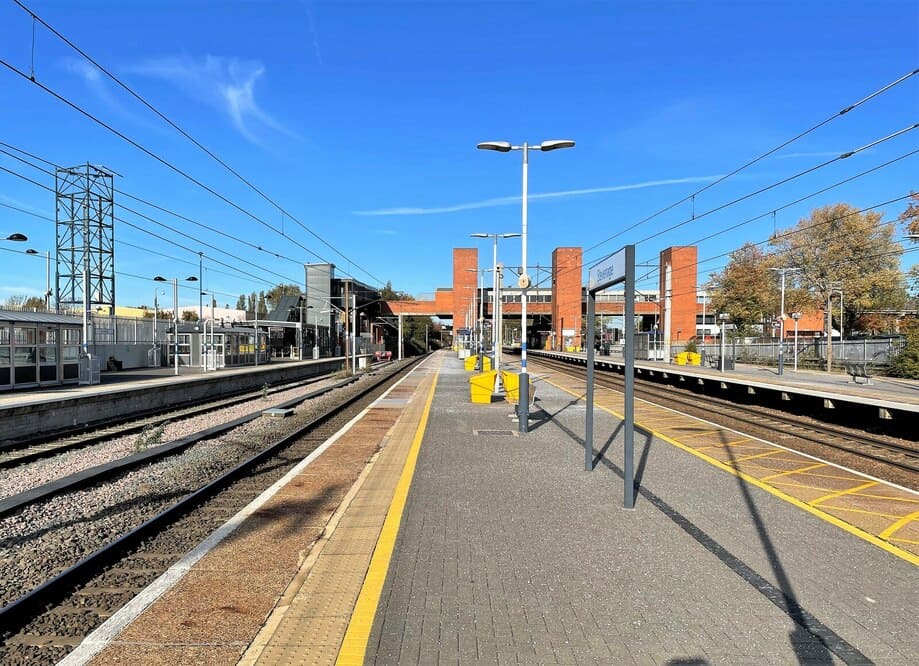
The crown jewel of Stevenage’s connectivity remains its fast, frequent rail service to London. Direct trains reach Kings Cross in just 24-27 minutes—a journey time that many inner London residents would envy. Services to London Victoria take approximately 45 minutes via the Thameslink route.
Trains depart every few minutes during peak periods, providing flexibility that removes the stress of missing a connection. Off-peak frequencies remain strong, making the town viable for those with flexible working arrangements or varied schedules.
Beyond London, direct services connect to Cambridge (19 minutes), Peterborough (25 minutes), Brighton (90 minutes), and various destinations along the East Coast Main Line. This versatility proves invaluable for those whose work involves travel beyond the capital.
Road Network and Airport Access
The A1(M) motorway runs immediately west of Stevenage, providing swift connections northward and southward. The M25 lies within comfortable reach, while the A602 connects directly to the nearby towns.
Luton Airport sits just 30 minutes away by road, making it remarkably convenient for frequent flyers. The rail connection to Luton Airport Parkway also provides a reliable alternative to driving and parking.
Local Transport and Cycling
Within Stevenage itself, an extensive bus network operated primarily by Arriva connects residential areas to shopping centres, the station, and surrounding villages. Service frequencies vary but generally provide practical options for those without cars.
Cycling infrastructure deserves special mention. Stevenage was planned with segregated cycle paths throughout a forward-thinking feature that predated the current enthusiasm for cycling infrastructure. These dedicated routes make cycling a genuinely viable option for commuting and local journeys, weather permitting.
Train times verified through National Rail Enquiries and Greater Anglia timetables (October 2025 schedule).
Schools and Education: Raising Families in Stevenage
Educational quality ranks high among priorities for families, and Stevenage delivers a reassuringly strong performance in this department.
Primary Education
Stevenage boasts numerous primary schools rated “Good” or “Outstanding” by Ofsted. Five schools have achieved the highest “Outstanding” rating, creating genuine choice within catchment constraints.
Standout primary schools include:
- Aston St Mary’s CE Primary School: Consistently strong performance with excellent pastoral care
- Round Diamond Primary School: Modern facilities and broad curriculum appeal
- Various church schools: Several denominational options for families seeking faith-based education
Catchment areas significantly influence property demand and prices. Homes within walking distance of outstanding-rated schools often command premiums, though these remain modest compared to similar effects in wealthier areas.
Secondary Education
Secondary options centre primarily around several well-regarded schools:
- Barnwell School: Popular comprehensive with solid academic results and extensive extra-curricular offerings
- The Thomas Alleyne Academy: Serves the local area with good Ofsted ratings
- The Nobel School: Another strong comprehensive option
Most Stevenage secondary schools achieve “Good” ratings from Ofsted, with some approaching “Outstanding” status. While perhaps not matching the elite state schools found in certain London boroughs, they provide perfectly solid education that prepares students well for further education.
Further Education
North Hertfordshire College maintains a campus in Stevenage, offering vocational courses, A-levels, and apprenticeships. For those seeking traditional sixth-form education, several schools provide this pathway, while universities in Cambridge, London, and Luton remain easily accessible.
Special Educational Needs
Dedicated provision exists for students with special educational needs through schools like Greenside and Lonsdale, ensuring local families can access appropriate support without lengthy commutes.
School ratings from Ofsted inspection reports (accessed September 2025) and Department for Education performance tables (2024/25 academic year).
Employment Opportunities: Working in and Around Stevenage
Stevenage functions both as an employment destination in its own right and as a base for London commuters a dual character that strengthens its economic resilience.
Major Local Employers
Several significant companies maintain headquarters or major operations in Stevenage, particularly along Gunnels Wood Road:
- GlaxoSmithKline (GSK): One of the world’s leading pharmaceutical companies, employing thousands locally
- Airbus Defence and Space: Major aerospace employer offering engineering and technical roles
- MBDA: Missile systems company providing skilled employment opportunities
These anchor employers create ripple effects throughout the local economy, supporting service industries and creating indirect employment. They also attract highly skilled professionals to the area, contributing to the demographic mix.
London Commuting Reality
The remarkable commute time to London expands employment possibilities enormously. Professionals can access the full range of London opportunities while benefiting from Stevenage’s lower living costs—a combination that appeals particularly to young professionals and families seeking to maximise their income-to-housing ratio.
The mathematics often work strikingly well. Someone earning £50,000 in London but saving £1,500 monthly on housing costs effectively receives a substantial raise simply by changing postcodes. Factor in larger homes, gardens, and reduced living stress, and the appeal becomes clear.
Lifestyle and Amenities: Daily Life in Stevenage
Beyond the practical considerations of safety, costs, and commuting, quality of life depends largely on available amenities and cultural offerings.
Shopping and Retail
The pedestrianised town centre hosts familiar high street names alongside the Westgate Shopping Centre. While not matching the retail offerings of larger cities, most daily needs can be met locally without difficulty.
Retail parks around the periphery provide the expected selection of large-format stores—Currys, B&Q, M&S, Smyths Toys, and various others. These prove particularly useful for bulkier purchases without requiring trips into London.
Old Town delivers a more characterful shopping experience, with independent boutiques, antique shops, and specialist retailers creating a pleasant afternoon browse.
Dining and Social Scene
The restaurant landscape reflects Stevenage’s multicultural population, offering cuisine spanning multiple continents. Old Town concentrates the more characterful eateries, including traditional pubs serving decent food alongside independent restaurants.
The New Town provides familiar chain restaurants and cafes, perfectly adequate if rarely exciting. For special occasions, nearby Hitchin or Harpenden offer more sophisticated dining options within short drives.
The social scene caters primarily to families and established residents rather than young singles seeking vibrant nightlife. A few pubs and bars exist, but anyone prioritising nightlife variety would likely find themselves travelling to nearby towns or London regularly.
Parks and Recreation
Green space availability represents one area where Stevenage genuinely excels. Fairlands Valley Park provides extensive grounds for walking, boating, and outdoor activities. Shephalbury Park offers another substantial green lung, while numerous smaller parks dot residential areas.
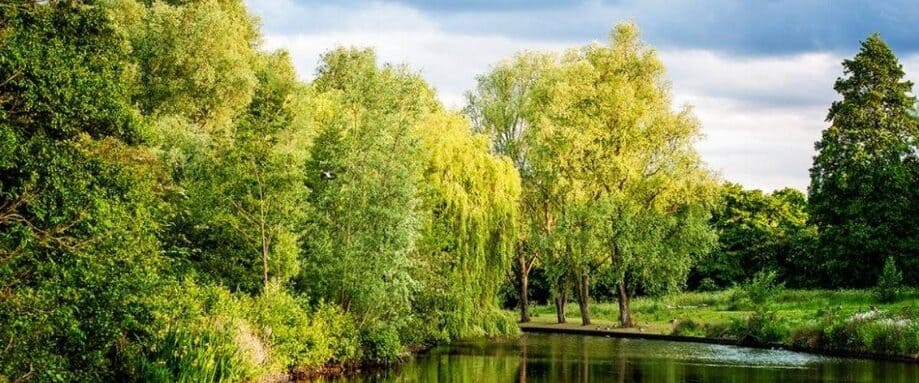
The Stevenage Outer Orbital Path (affectionately known as STOOP) comprises 27 miles of circular walking route around the town’s perimeter, accessing countryside without requiring car travel. Cycling enthusiasts appreciate both the internal cycle paths and access to wider Hertfordshire routes.
Cultural Attractions
The Gordon Craig Theatre hosts touring productions, comedy shows, and local performances—not rivalling West End offerings but providing reasonable entertainment options locally. Stevenage Museum preserves local history for those interested in the town’s evolution.
For more substantial cultural experiences, London’s museums, theatres, and galleries remain easily accessible for evening or weekend visits. Similarly, nearby Cambridge offers world-class cultural institutions within 20 minutes by train.
Sports and Fitness
Stevenage FC provides local professional football, offering affordable entertainment and community focus for sports fans. Various leisure centres including the David Weir Leisure Centre deliver swimming pools, gyms, and sports facilities.
Numerous clubs cater to specific interests—cricket, hockey, bowls, martial arts, and more—making it reasonably straightforward to maintain active hobbies.
Old Town vs New Town: Choosing Your Neighbourhood
Understanding the fundamental character differences between these two areas helps narrow your search considerably.
Old Town: Period Charm and Premium Prices
The Old Town delivers unquestionable character. Period properties ranging from Georgian townhouses to Victorian terraces line streets that predate twentieth-century planning. The high street feels authentically historic, with independent shops, traditional pubs, and a genuine village atmosphere despite proximity to the modern town.
This charm commands corresponding premiums. Property prices typically exceed New Town equivalents by twenty to thirty percent. Families seeking period features, established gardens, and prestige addresses naturally gravitate here.
The area also benefits from some of Stevenage’s lowest crime rates, strong schools nearby, and active community engagement. If budget permits, Old Town often represents the preferred choice for those prioritising character and perceived status.
New Town: Modern Practicality and Value
The New Town prioritises function over form. Post-war architecture dominates, offering practical layouts and modern conveniences but rarely inspiring aesthetic admiration. However, this pragmatism delivers genuine advantages—larger rooms, better insulation, and often more generous gardens than equivalent-priced Old Town properties.
Recent developments within the New Town provide genuinely contemporary housing, with modern specifications and energy efficiency. Estates like Great Ashby blend into the newer section, offering family homes at accessible prices.
The New Town’s pedestrianised centre concentrates shopping, services, and transport connections, making car-free living more viable. While lacking Old Town’s charm, it functions efficiently for daily needs.
Specific Neighbourhoods Worth Noting
Great Ashby: Modern development popular with families. Good schools nearby, newer properties, and reasonable safety record. Prices sit mid-range.
Bragbury End: Sought-after area combining good transport links with pleasant residential streets. Mix of property types and ages.
Pin Green: Established neighbourhood offering decent value. Varies by specific location—worth visiting rather than relying on general reputation.
Broadwater: Mixed reputation but contains pockets of perfectly acceptable housing. Typically offers best value for money if willing to research specific streets carefully.
Pros and Cons of Living in Stevenage: The Honest Assessment
Every location involves trade-offs. Understanding Stevenage’s genuine advantages and authentic drawbacks helps determine whether it suits your particular circumstances and priorities.
Significant Advantages
Outstanding Value for Money: Perhaps Stevenage’s single strongest card. Housing costs significantly undercut nearby towns while maintaining excellent London access. Families can afford substantially more space for the same budget compared to alternatives.
Exceptional Transport Links: The 24-minute journey to Kings Cross provides London access that even some inner London locations can’t match. Combined with motorway proximity and airport access, connectivity proves genuinely impressive.
Solid Schools: The concentration of Good and Outstanding rated schools removes a major concern for families. Catchment areas remain achievable without astronomical property premiums.
Employment Options: Local major employers create opportunities without London commuting, while that commute remains viable when required. This flexibility strengthens economic resilience.
Green Space Access: Extensive parks and the orbital path provide recreational opportunities without requiring car journeys. The cycling infrastructure deserves recognition as genuinely ahead of its time.
Practical Amenities: Everything you actually need exists locally—supermarkets, retail parks, healthcare facilities, leisure centres. Daily life functions smoothly without constant expeditions elsewhere.
Honest Drawbacks
Aesthetic Appeal: The New Town architecture ranges from functional to frankly dreary. Anyone prioritising visual beauty in their surroundings will likely find Stevenage disappointing, barring the Old Town.
Reputation Challenges: Fair or not, Stevenage carries perception baggage. Some people feel self-conscious about their address, and online discussions often skew negative.
Limited Cultural Scene: While adequate for everyday needs, cultural and entertainment offerings can’t compare to larger cities. Regular London trips become necessary for those valuing diverse cultural experiences.
Crime Concerns in Specific Areas: While overall safety proves acceptable, certain neighbourhoods experience higher crime rates that require careful area selection.
Social Scene Limitations: The nightlife and social opportunities suit families and established residents better than young singles seeking vibrant social environments.
Town Centre Decline: Like many UK towns, the shopping centre shows signs of retailer departures and dated presentation. Regeneration plans exist but implementation takes time.
How Stevenage Compares to Alternatives
Understanding Stevenage’s position relative to nearby towns helps contextualise whether it represents your best option.
Stevenage vs Hitchin
Hitchin undoubtedly wins on charm and aesthetics. This historic market town delivers chocolate-box appeal with its medieval street layout and independent shops. However, this appeal costs substantially more—typically twenty to thirty percent premiums for equivalent properties.
Transport connections favour Stevenage slightly, with faster direct services and higher frequencies. Both towns offer good schools, though Hitchin edges ahead marginally in overall Ofsted performance.
The choice ultimately depends on whether you prioritise character and ambiance (Hitchin) or value and practicality (Stevenage).
Stevenage vs St Albans
St Albans operates in a different league aesthetically and culturally. This cathedral city offers sophisticated dining, excellent schools, and genuine historical significance. Property prices reflect this premium status—often fifty to seventy-five percent higher than Stevenage equivalents.
Both provide excellent London access, though St Albans serves different termini. For those prioritising prestige and cultural amenities with budget to match, St Albans wins comfortably. For value-focused families, Stevenage makes more financial sense.
Stevenage vs Welwyn Garden City
These neighbours share similar “new town” heritage and comparable architecture. Welwyn Garden City arguably achieved the vision more successfully, with better integration of green spaces and slightly more appealing town centre.
Property prices and crime statistics run remarkably similar. The choice between them often comes down to specific job locations or personal preference rather than dramatic differences.
Stevenage vs Luton
Luton offers marginally lower property prices but typically scores worse on crime statistics and school performance. Both face similar reputation challenges online.
Stevenage generally proves the safer choice, with better schools and slightly more appealing overall environment, though both function adequately as affordable commuter bases.
Practical Considerations for Your Move
Several practical factors deserve attention when seriously considering Stevenage.
Council Services
Stevenage Borough Council handles local services, with Hertfordshire County Council managing strategic functions. Bin collections operate reliably, council tax rates remain moderate, and online services function acceptably well.
Healthcare Access
Lister Hospital provides full accident and emergency services, making serious healthcare easily accessible. Several GP surgeries serve the area, though individual practices vary in availability and reputation—researching and registering early proves advisable.
Schools Registration
Popular schools fill quickly, making early catchment research essential. Verify current catchment boundaries directly with schools rather than relying on estate agent claims, as these can shift periodically.
Transport Season Tickets
Factor season ticket costs into your budget from day one. Monthly tickets run approximately £480 for Kings Cross, representing a substantial ongoing cost that balances against housing savings.
Area Research Visits
Visiting at different times and days provides invaluable insight. Walk around specific neighbourhoods both during daytime and evening. Check local streets, observe maintenance standards, and note how comfortable you feel in the environment.
Final Verdict: Who Should Consider Stevenage?
Stevenage suits particular circumstances remarkably well while failing to match others entirely.
Ideal for:
- London commuters prioritising value: If you work in London but refuse to pay London housing prices, Stevenage delivers exceptional value with genuine rapid access
- Growing families needing space: The combination of affordable family homes, decent schools, and safe neighbourhoods makes compelling sense for those with children
- First-time buyers stretching budgets: Entry-level properties remain accessible while maintaining reasonable living standards
- Practical-minded individuals: Those who prioritise function, value, and convenience over aesthetics and prestige will appreciate Stevenage’s offerings
Less suitable for:
- Aesthetics enthusiasts: Anyone deeply valuing architectural beauty and visual charm will likely find Stevenage disappointing outside the Old Town
- Singles seeking vibrant social scenes: The lifestyle caters to families rather than young professionals pursuing active nightlife
- Status-conscious individuals: Those for whom address prestige matters significantly will feel Stevenage’s reputation limitations
- Cultural scene devotees: While adequate, local cultural offerings can’t satisfy those requiring diverse, sophisticated entertainment options
Conclusion: Looking Forward
Stevenage occupies an interesting position in 2025—a town that delivers genuine practical advantages while battling perception challenges that often exceed reality. The fundamentals stack up impressively: exceptional transport links, affordable housing, solid schools, and major employers create a foundation that many pricier alternatives struggle to match.
The ongoing regeneration projects promise improvements, though transformation happens gradually. Those willing to look past aesthetic limitations and reputation concerns can find significant value and perfectly acceptable quality of life. Conversely, anyone prioritising charm, cultural richness, or prestige will likely find better matches elsewhere despite paying substantially more.
For families, commuters, and practical-minded buyers focused on fundamentals rather than frills, Stevenage deserves serious consideration. Visit with open eyes, research specific neighbourhoods carefully, and judge based on your actual priorities rather than online reputation. You might discover that this frequently overlooked town offers exactly what you need, just don’t expect to fall in love with its architecture.
This guide reflects conditions and data current as of October 2025. Property prices, crime statistics, and local amenities can change over time. Always conduct your own research and visit locations personally before making relocation decisions.
FAQ
Is Stevenage safe to live in?
Stevenage has a crime rate of 76 incidents per 1,000 people as of August 2025, which is approximately 5% higher than the England and Wales average. However, it ranks as the second safest major town in Hertfordshire. Crime rates vary significantly by neighbourhood, areas like Old Town, Bragbury End, and Great Ashby show lower crime statistics, while St Nicholas, Shephall, and parts of Chells experience higher rates. Overall crime decreased by 11% between 2022 and 2023, suggesting improving trends.
How much does it cost to live in Stevenage?
The average house price in Stevenage is £318,000 (July 2025, ONS), with first-time buyers paying around £281,000. Rental costs average £1,380 per month, with one-bedroom flats typically costing £900-£1,200, two-bedroom properties £1,200-£1,600, and three-bedroom houses £1,600-£2,000 monthly. These prices are significantly lower than London and even neighbouring towns like St Albans and Hitchin.
How long is the commute from Stevenage to London?
Direct trains from Stevenage reach London Kings Cross in just 24-27 minutes, making it one of the fastest commutes from Hertfordshire. Services to London Victoria take approximately 45 minutes. Trains run every few minutes during peak times and maintain good frequencies throughout the day. A monthly season ticket to Kings Cross costs around £480.
Is Stevenage a good place for families?
Yes, Stevenage offers excellent value for families with affordable housing, solid schools (most rated Good or Outstanding by Ofsted), and extensive green spaces including Fairlands Valley Park. Five primary schools have achieved Outstanding ratings, and secondary schools like Barnwell School perform well. The town provides safe neighbourhoods (particularly Old Town, Great Ashby, and Bragbury End), good leisure facilities, and excellent transport links for working parents.
What are the best areas to live in Stevenage?
The best areas in Stevenage include Old Town (historic character, period properties, lowest crime), Great Ashby (modern development, family-friendly), Bragbury End (sought-after with good transport), and Broadwater (decent value in specific streets). These areas offer lower crime rates, better schools, and stronger community engagement than other parts of town.
What areas should I avoid in Stevenage?
Areas with consistently higher crime rates and more challenges include St Nicholas (St Nicks), Shephall, and certain parts of Chells. These neighbourhoods experience above-average anti-social behaviour and property crime. However, even within these areas, specific streets vary considerably, so individual research is essential rather than blanket avoidance.
Why is Stevenage called a new town?
Stevenage was designated as the UK’s first New Town under the 1946 New Towns Act, making it historically significant. The town was purpose-built from the late 1940s to house people displaced by World War II bombing, particularly from London’s East End. It pioneered many urban planning concepts including Britain’s first completely pedestrianised town centre and extensive segregated cycle path network.
What is the crime rate in Stevenage compared to the UK average?
Stevenage’s overall crime rate of 76 per 1,000 people sits approximately 5% above the England and Wales average but 27% higher than Hertfordshire’s overall rate. Violent crime accounts for 36% of incidents and anti-social behaviour 21%. However, recent trends show improvement with an 11% decrease in overall crime between 2022-2023.
Are there good schools in Stevenage?
Yes, Stevenage has numerous good schools with most primaries and secondaries rated Good or Outstanding by Ofsted. Five primary schools have achieved Outstanding status including Aston St Mary’s CE Primary and Round Diamond Primary. Popular secondary schools include Barnwell School, The Thomas Alleyne Academy, and The Nobel School. North Hertfordshire College provides further education options locally.
How does Stevenage compare to Hitchin?
Hitchin offers more charm and aesthetic appeal with its historic market town character but costs 20-30% more for equivalent properties. Stevenage provides faster and more frequent train services to London. Both have good schools, though Hitchin edges slightly ahead. Choose Hitchin for character and ambiance; choose Stevenage for value and practicality.
What jobs are available in Stevenage?
Stevenage hosts major employers including GlaxoSmithKline (GSK) in pharmaceuticals, Airbus Defence and Space in aerospace, and MBDA in defence systems. These companies provide thousands of skilled jobs in engineering, technology, research, and corporate functions. The town also serves as an excellent base for London commuters seeking higher salaries while enjoying lower living costs.
What is there to do in Stevenage?
Stevenage offers Fairlands Valley Park for outdoor activities, the Gordon Craig Theatre for live performances, Stevenage FC for football, and the 27-mile Stevenage Outer Orbital Path (STOOP) for walking and cycling. The town has shopping centres, retail parks, diverse restaurants reflecting its multicultural population, leisure centres, and Knebworth House nearby. Old Town provides charming pubs and independent shops. London’s cultural attractions remain easily accessible for day trips.
Last Updated on October 12, 2025 by James Cartwright


